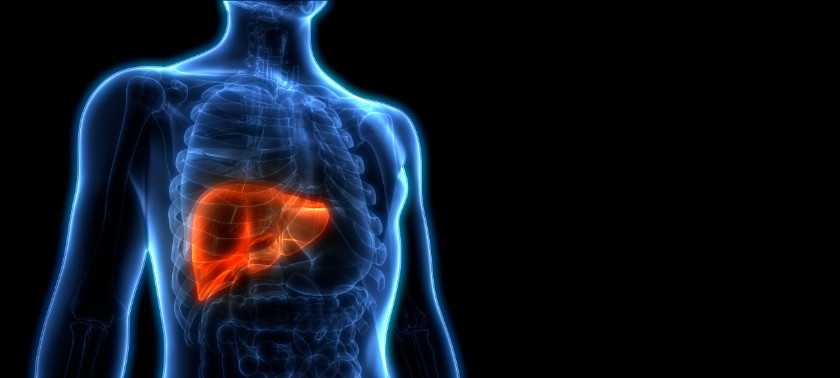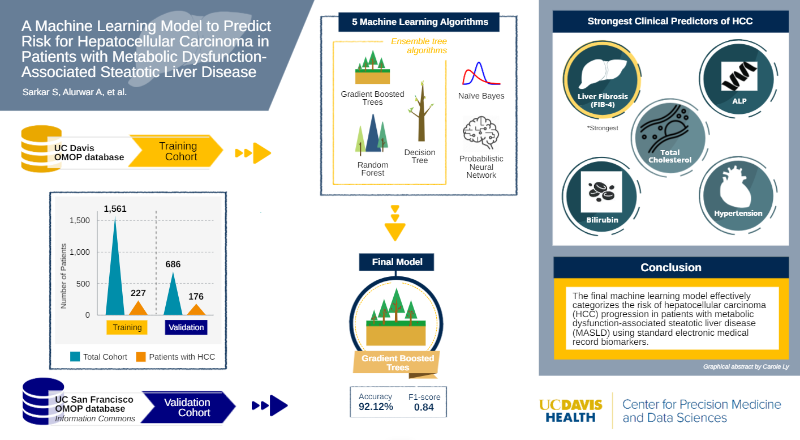Metabolic Syndrome-Associated Steatotic Liver Disease
Metabolic Syndrome-Associated Steatotic Liver Disease (MASLD)
Hepatocellular Carcinoma (HCC) and Metabolic Syndrome-Associated Steatotic Liver Disease (MASLD)
Our machine learning prediction model
As part of this multi-institutional study, we have created a pilot ML model using data from UC Davis OMOP and UCSF Information Commons that include standard clinical variables selected by our team of physician collaborators and data scientists.
Our work, entitled A Machine Learning Model to Predict Risk for Hepatocellular Carcinoma in Patients with Metabolic Dysfunction-Associated Steatotic Liver Disease, has been published in the journal, Gastro Hep Advances.
In the next phase of the project, we intend to further refine this model by training it on a wide range of datasets and multimodal data, including clinical notes and images, from institutions across the country.
Our pathway to creating this pilot model for MASLD to HCC progression is:
- Create a base cohort comprised of patients diagnosed with MASLD
- Identify patients within base cohort who developed HCC
- Critically select clinically significant phenotypes (features) to be used for training ML algorithms
- Split data into 90/10 cohorts to train and validate ML algorithms
- Apply data to multiple ML algorithms
- Select final model based on accuracy, sensitivity, and specificity
- Validate final model against a validation dataset from a separate institution



